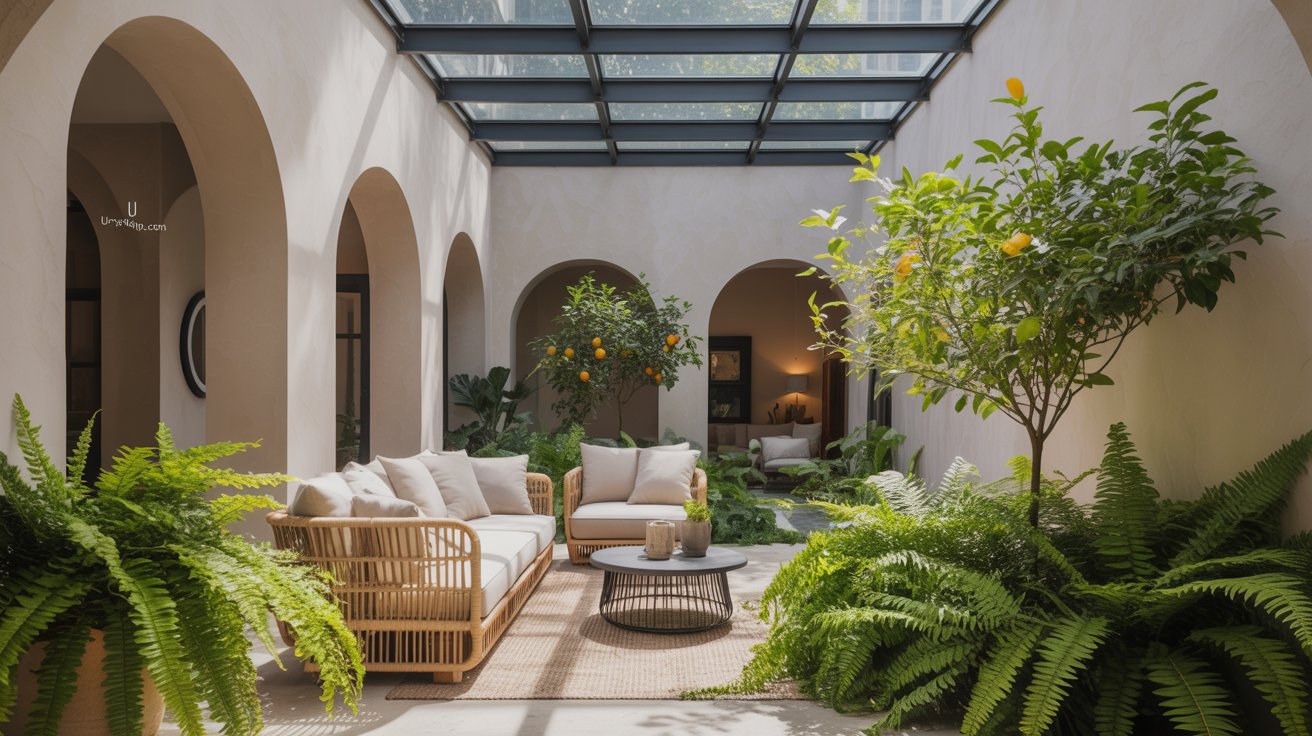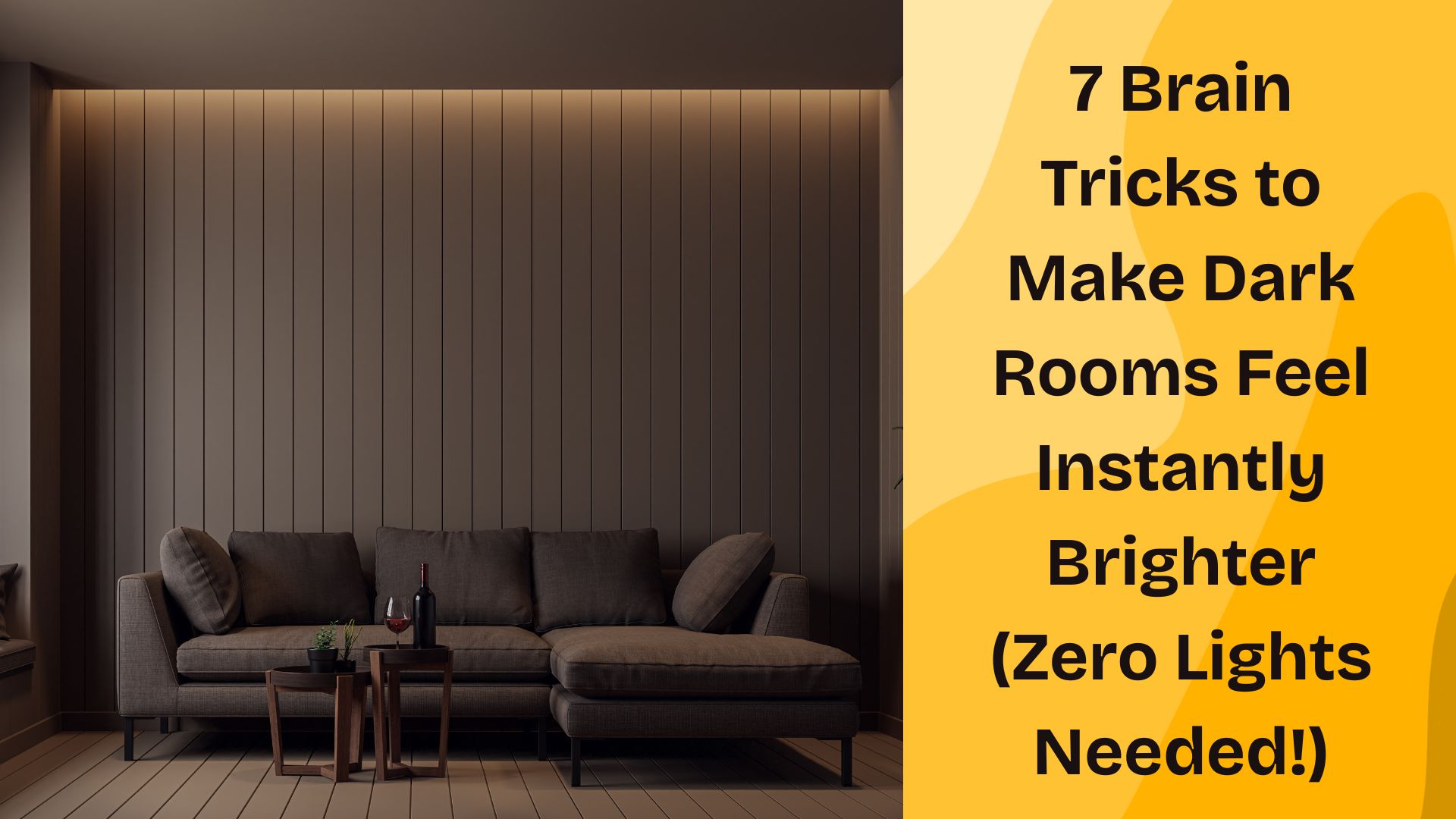Hundreds Visited: My 13 Most Jaw-Dropping Tiny Home Design Ideas (That Actually Work!)
After visiting many tiny home design ideas across the country, I share 13 amazing tiny home design ideas. These ideas mix beautiful looks with smart features. Find inspiration in real-world innovation! #TinyHome #SmallSpaceDesign #DesignInspiration)
Introduction: Beyond the Hype, Into the Wow-Factor
Hi there! I’m [Er.Faisal Qureshi]. For the past [5] years, tiny living has been more than a trend for me.
It has been a passion, a research project, and honestly, an obsession. I’ve crisscrossed the country, stepping inside hundreds of tiny homes. I’ve seen the good, the cramped, the clever, and the downright forgettable.
But then… there are the moments that make you stop dead in your tracks. The ideas that elicit a genuine gasp, a whispered “wow,” or an incredulous head shake. These are not just pretty pictures. They are design solutions that skillfully address the main challenges of tiny living. These challenges include space, light, storage, and comfort. At the same time, they offer great beauty.
Out of all those incredible spaces, 13 tiny home design ideas consistently made my jaw drop. They redefined what I thought was possible in under 400 square feet. Forget cookie-cutter layouts; prepare for ingenuity, beauty, and pure small-space magic.
These are the ideas that stuck with me, the ones I find myself describing to friends months later. Let’s dive into the brilliance!
1. The Multi-Functional Staircase Oasis
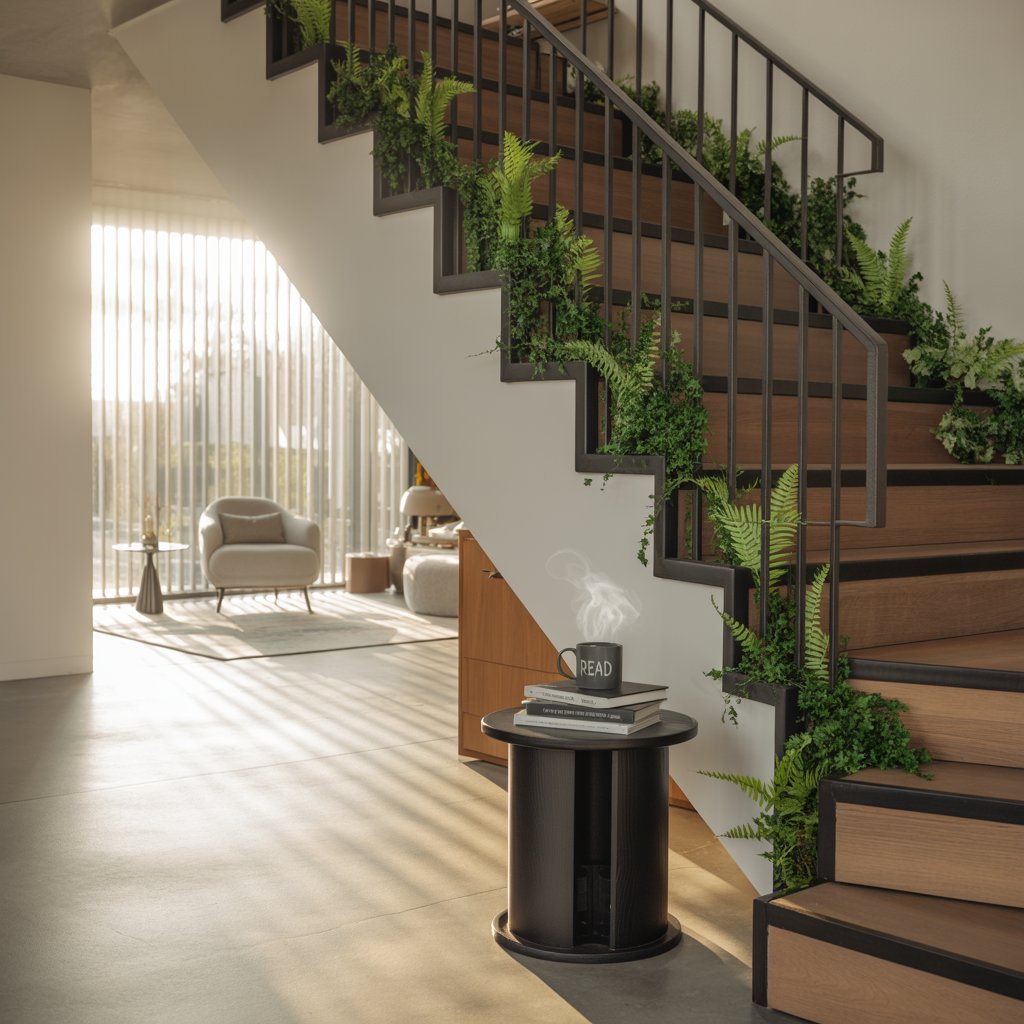
- The Jaw-Dropper: Forget wasted space under stairs! This wasn’t just drawers; it was a fully integrated ecosystem. Each deep drawer pulled out easily. The side panel hinged open to show a tall pantry cabinet. The landing changed into a cozy reading nook. Built-in bookshelves flanked a comfortable window seat.
- Why It Works: It obliterated the concept of “dead space.” Storage was massive, accessible, and completely hidden when not in use. The reading nook felt intentional, not an afterthought.
- Steal This Idea: Look at every structural element as potential storage/living space. Can your stairs house drawers? Can a landing become a desk or seat? Maximize volume!
2. The Ceiling-High, Slide-Away Glass Wall
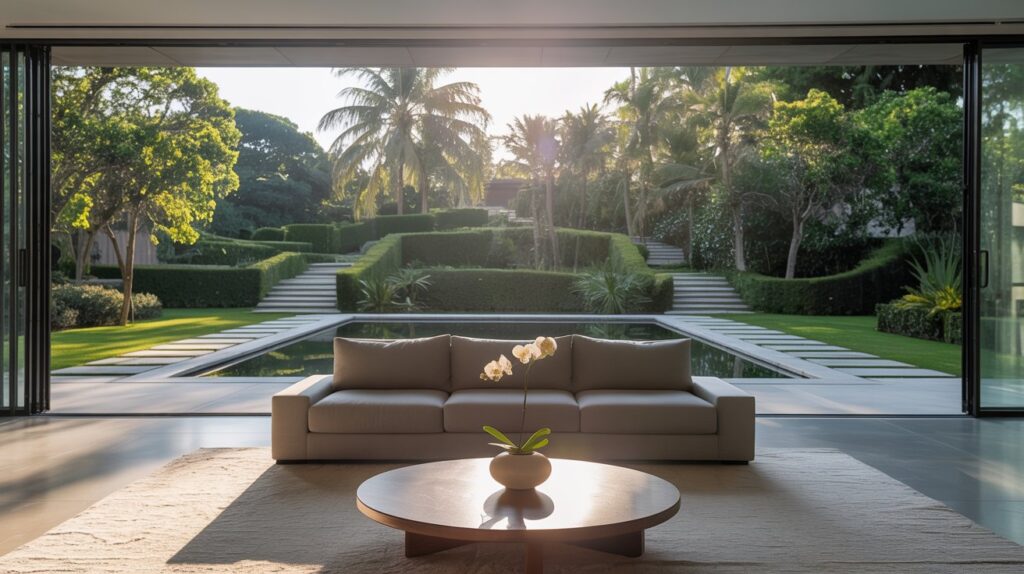
- The Jaw-Dropper: In a small home on the mountain, the living room wall was not just a window. It was a tall, floor-to-ceiling glass panel. This panel slid away on tracks and disappeared into a pocket in the wall next to it. Instantly, the boundary between inside and the breathtaking vista dissolved.
- Why It Works: It created an unparalleled sense of expansiveness and connection to nature. Light flooded the space. The engineering precision required was mind-boggling.
- Steal This Idea: If views are your asset, invest in large, operable glazing. Sliding or folding glass doors are more common, but maximizing height and using high-quality hardware is key. Frame your view like art.
3. The Transforming Central Core “Pod”
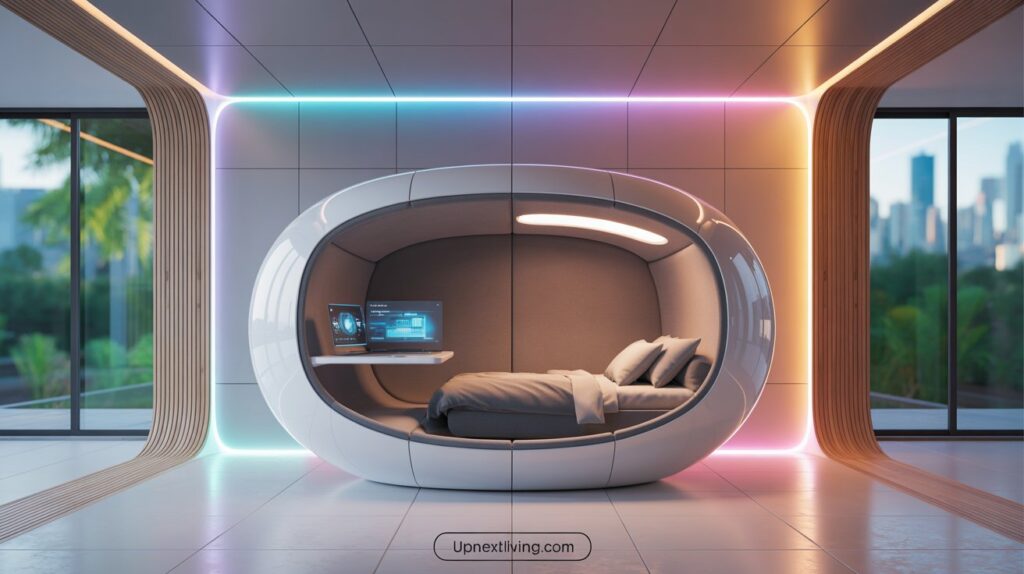
- The Jaw-Dropper: A sleek, central unit housed the bathroom and a compact utility closet. But the magic? Its exterior walls were multifaceted.
- One side flipped down to become a sturdy dining table with integrated benches. Another panel slid to reveal a full-height pantry. It was the home’s functional heart and shape-shifter.
- Why It Works: It organized plumbing and utilities well. This made the outside of the core very useful. It saved important wall space for windows and living areas.
- Steal This Idea: Can a central element serve multiple purposes? Think beyond just hiding utilities; make its surfaces work hard (magnetic boards, fold-down desks, integrated storage).
4. The “Floating” Loft with Skylight Serenity
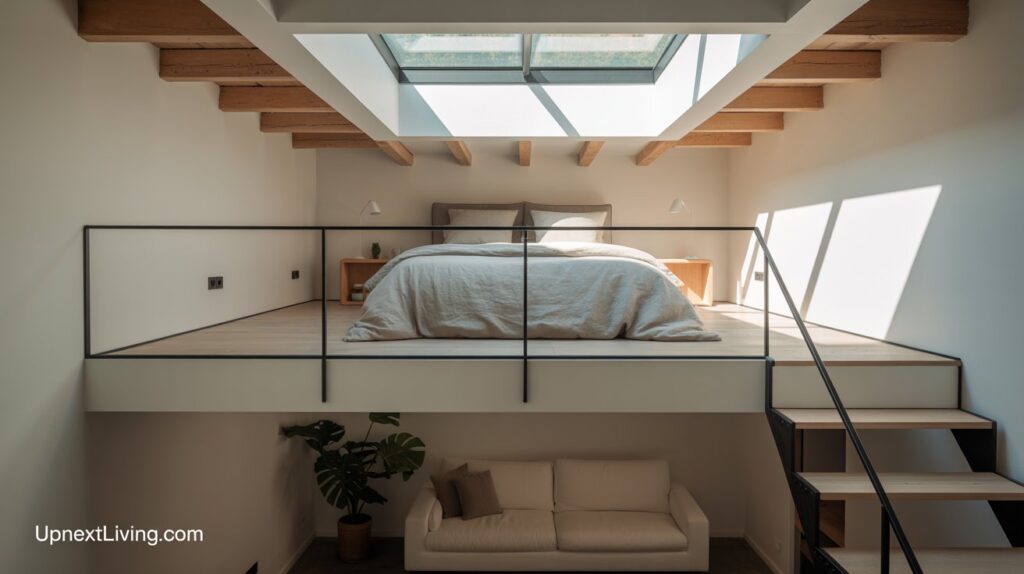
- The Jaw-Dropper: Instead of a typical boxed-in loft, this sleeping area felt like a suspended cloud. Minimalist steel cables replaced bulky railings, offering safety without visual weight. Directly above the bed, a massive skylight framed the stars or treetops. The effect was airy, serene, and utterly dreamy.
- Why It Works: It banished loft claustrophobia. The cables preserved sightlines and light flow, while the skylight brought the outside in, creating a profound sense of openness.
- Steal This Idea: Prioritize light in the loft. Use transparent or minimal railings (check codes!). A strategically placed skylight above a bed is transformative.
5. The Bathtub Sanctuary with a Fold-Down Wall
- The Jaw-Dropper: Tucked into a corner, a deep soaking tub promised luxury. The showstopper? The whole wall next to it folded down flat, even with the tub rim. This made a smooth private deck that looked out over a forest ravine. Bathe indoors or alfresco in seconds.
- Why It Works: It brought the spa experience to the tiny home, merging indoor comfort with outdoor immersion in a uniquely dramatic way. Space felt doubled.
- Steal This Idea: If privacy allows, integrate outdoor access directly from key relaxation zones (bath, bedroom). Large, operable walls are investment-worthy for impact.
6. The Kitchen Backsplash That’s Secretly a Giant Pantry
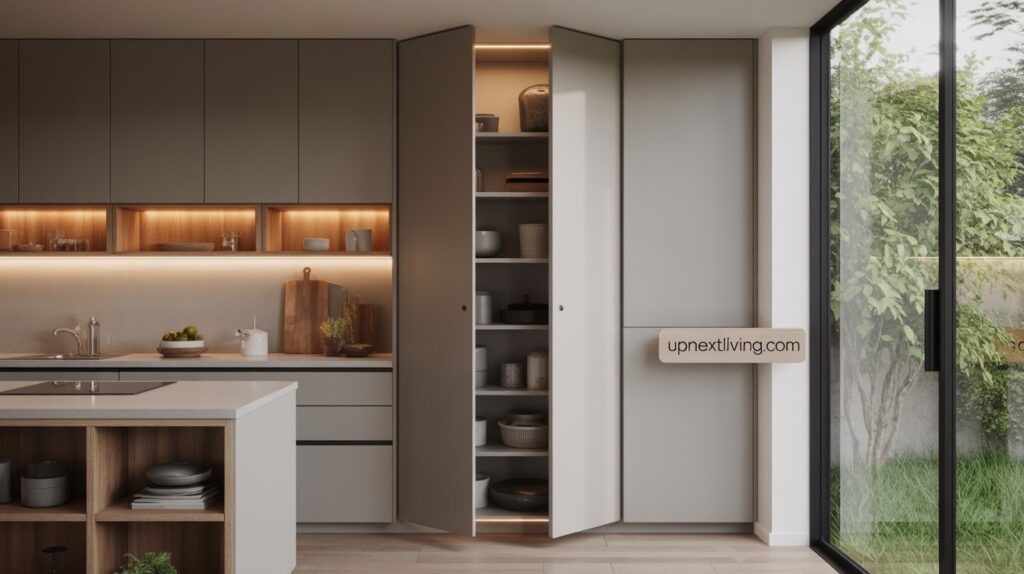
- The Jaw-Dropper: The beautiful, full-height tile backsplash behind the stove… wasn’t fixed. The entire section, from counter to ceiling, was a giant, shallow cabinet door on heavy-duty hinges. Opening it revealed meticulously organized shelves holding dry goods, spices, and cookware – an entire pantry hidden in plain sight.
- Why It Works: It utilized the often-underused depth between studs brilliantly, providing massive storage without encroaching on floor space. The surprise factor was delightful.
- Steal This Idea: Look at your walls! Can you create shallow, full-height cabinets in unexpected places (backsplashes, beside doors)? Use beautiful fronts to disguise them.
7. The Murphy Bed Meets Home Theater
- The Jaw-Dropper: This wasn’t just a bed that folded up. When vertical, the bed’s underside was a smooth panel. A hidden projector dropped down from the ceiling, and the panel was the screen. The opposite wall had discreetly mounted speakers. At night: bedroom. With a click: immersive cinema.
- Why It Works: It transformed the primary function of the space dramatically and luxuriously without needing extra square footage. The integration was seamless.
- Steal This Idea: Think multi-sensory transformations. How can a major furniture piece (like a Murphy bed) serve another high-impact purpose when stowed? (Office, entertainment, dining?).
8. The Indoor/Outdoor “Sunken” Conversation Pit
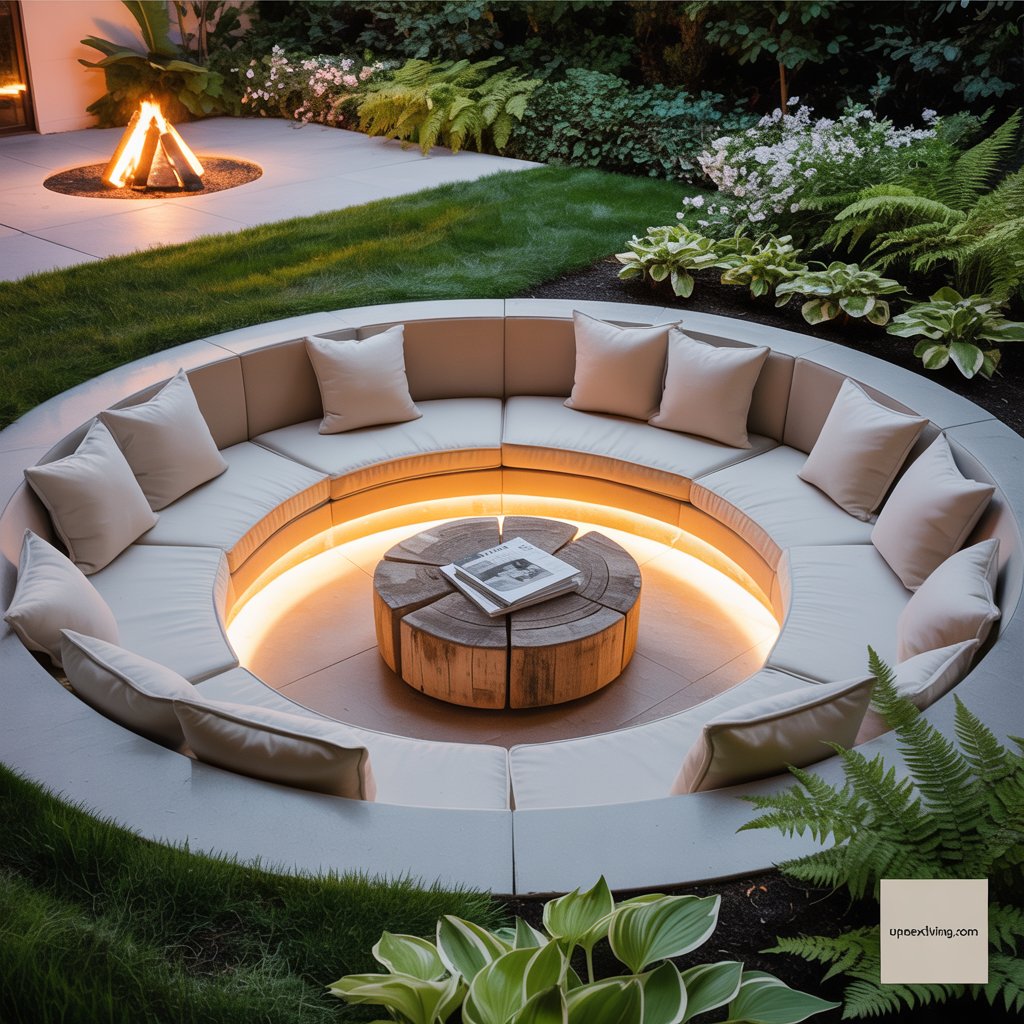
- The Jaw-Dropper: Built into a deck extending from the living area, a cozy, slightly sunken seating area was lined with weather-resistant cushions. A cantilevered roof section provided shelter. Large glass doors connected it directly to the living room, making it feel like an integral, inviting room when open.
- Why It Works: It dramatically expanded living space outdoors, creating a dedicated, intimate zone for gathering that felt both separate and connected. The sunken design added comfort and definition.
- Steal This Idea: Design your outdoor space as a true “room,” connected visually and physically to the interior. Levels (even slight ones) and overhead shelter add huge value.
9. The Staircase-Turned-Library Ladder Gallery
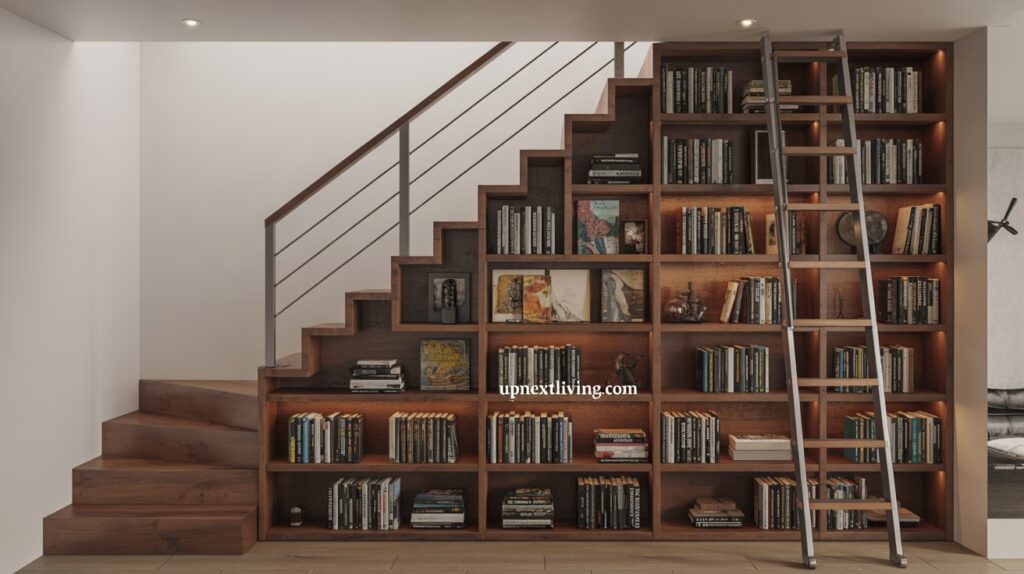
- The Jaw-Dropper: Accessing a loft wasn’t via traditional stairs, but via a sturdy, beautifully crafted library ladder on robust ceiling tracks. The ladder glided smoothly along one entire wall, which was floor-to-ceiling bookshelves and display niches. Reaching the loft felt like browsing a personal gallery.
- Why It Works: It saved immense floor space compared to stairs, provided tons of accessible vertical storage/display, and added a dynamic, whimsical element. Pure functional art.
- Steal This Idea: Consider alternatives to fixed stairs. Library ladders are space-saving wonders and turn a wall into highly functional, accessible storage. Ensure tracks are super sturdy!
10. The Hidden Compact Laundry “Dock”
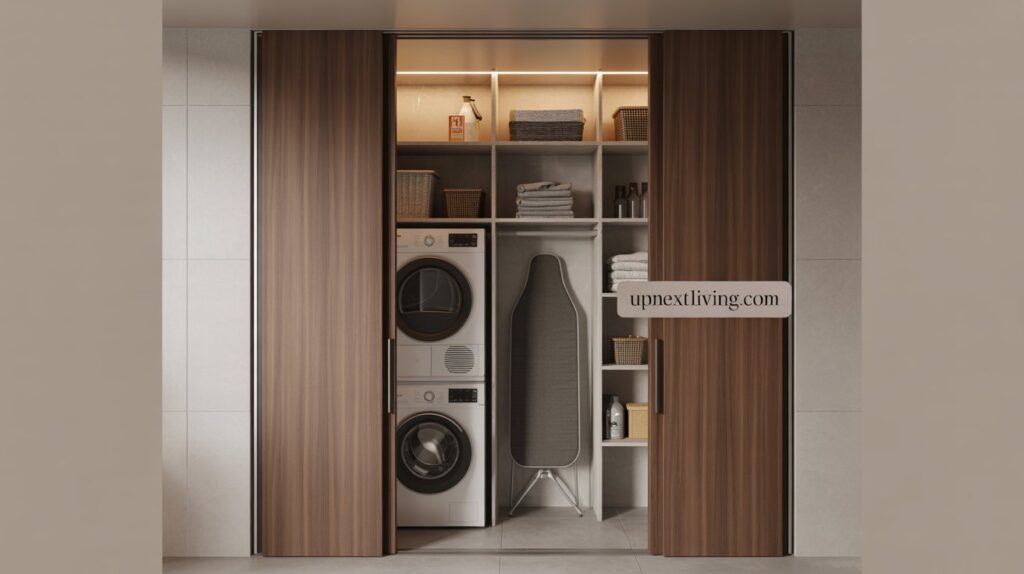
- The Jaw-Dropper:
- There was a great spot under a sturdy bathroom countertop. It was perfect for a small washer and dryer, or a combo unit. A custom panel that matches the countertop can slide or fold down. It covers the laundry area completely when not in use, hiding it from view.
- Why It Works: It answers the tough question of “where do I put the laundry?” in a smart way. It uses little space and keeps the laundry accessible but hidden, which helps maintain a clean look.
- Steal This Idea: Integrate appliances into cabinetry seamlessly. Look for underutilized cavities (under counters, in benches, under stairs). Prioritize ventilation if enclosing.
11. The Multi-Level Deck Symphony
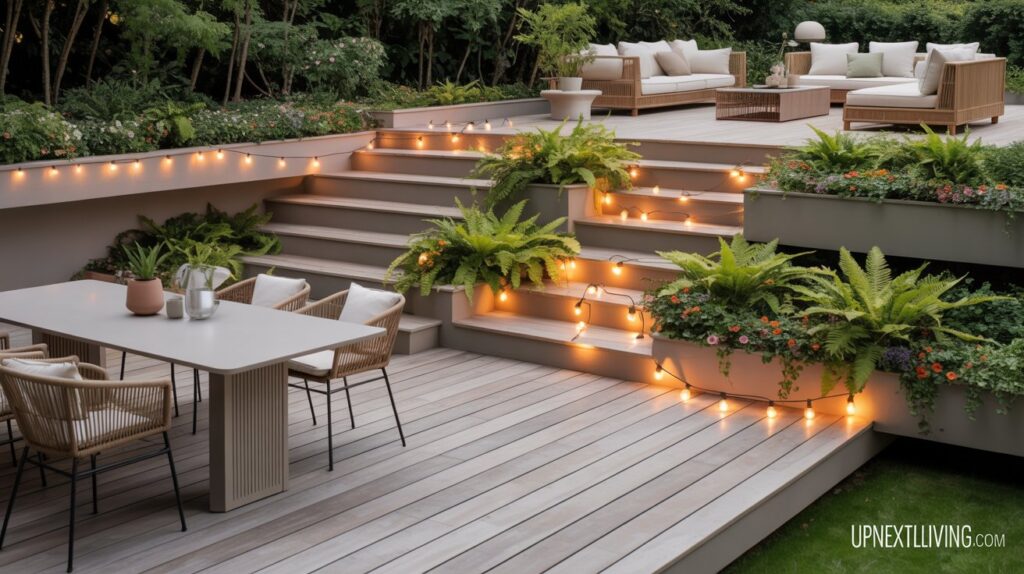
- The Jaw-Dropper: This wasn’t one deck; it was a series of interconnected platforms stepping down a hillside. One level for dining, another lower for a fire pit, another as a private yoga platform nestled in the trees – all connected by short staircases or paths, each with its own purpose and view.
- Why It Works: It created distinct outdoor “rooms,” maximized a sloped site, provided privacy for different activities, and offered constantly changing perspectives of the surroundings.
- Steal This Idea: Think of your outdoor space in zones. Use levels, railings, screens, or furniture to define different areas (dining, lounging, activity, quiet retreat) even in a small footprint.
12. The Full-Height, Rotating Shoe & Coat Closet
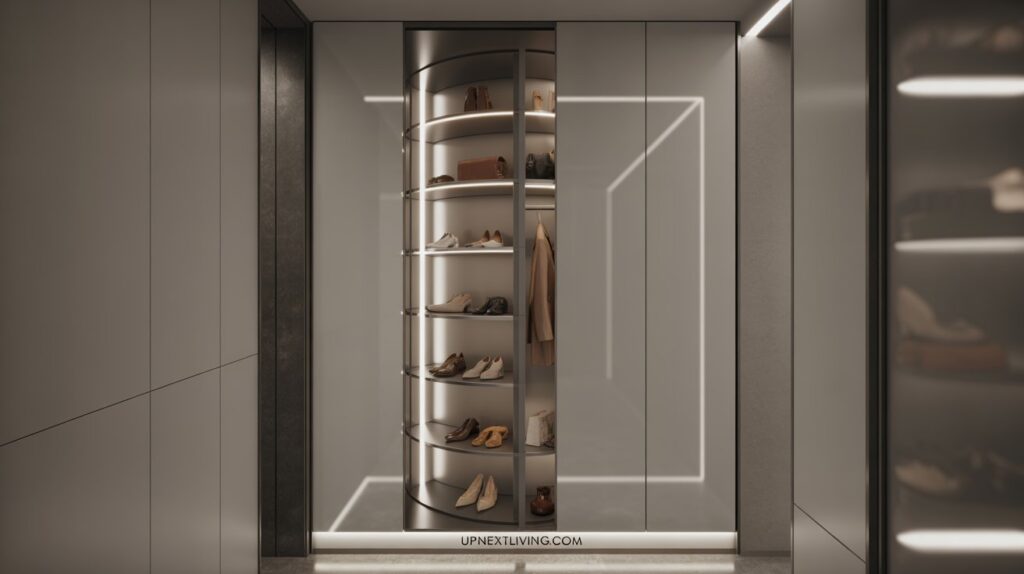
- The Jaw-Dropper: Beside the entry door, a narrow, floor-to-ceiling cabinet seemed unassuming. But the entire unit (about 18 inches deep) rotated smoothly on a central pivot! One side held coats and bags; spin it 180 degrees, and the other side revealed rows of shoe storage. Genius for muddy boots and keeping clutter hidden.
- Why It Works: It utilized a narrow, often-wasted space incredibly efficiently for high-turnover items, keeping the entryway pristine. The rotation made accessing everything easy.
- Steal This Idea: For deep but narrow spaces, think about using rotating mechanisms. These are like lazy susans but bigger! They work well in corner cabinets, pantries, or entry storage. Maximize verticality.
13. The Lightwell Atrium in the Middle
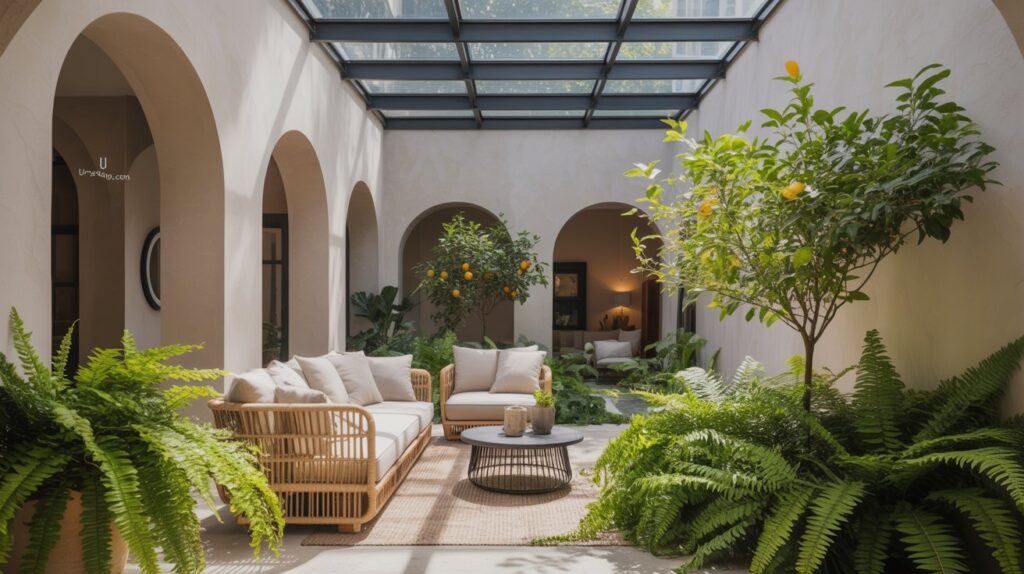
- The Jaw-Dropper: In the center of a slightly larger tiny home (around 30ft), a section of the roof was raised into a small clerestory or cupola. Directly beneath it, a small indoor planter or even a tiny water feature created a miniature light-filled atrium. Light cascaded down into the center of the home.
- Why It Works: It brought vital natural light deep into the core of the space, eliminating dark spots and creating a surprising, uplifting focal point that connected the interior vertically.
- Steal This Idea: If possible, incorporate skylights or clerestories over internal areas (hallways, bathrooms, central spaces) to borrow light and add architectural interest deep within the footprint.
Conclusion: Tiny Space, Limitless Imagination
Phew! Revisiting these 13 tiny home design ideas still gives me that thrill of discovery. What ties them all together? A fearless blend of problem-solving ingenuity and bold aesthetic vision. These homeowners and builders didn’t just accept limitations; they used them as a springboard for creativity.
After seeing hundreds of solutions, it’s clear: the most successful tiny homes aren’t just about shrinking a conventional house. They’re about reimagining how space functions, how light dances, how storage disappears, and how beauty integrates seamlessly with practicality. These jaw-dropping ideas prove that constraints can breed extraordinary innovation.
Which of these tiny home design ideas left you speechless? Was it the disappearing staircase (#1), the bathtub deck (#5), or the rotating closet (#12)? Maybe you’ve seen (or built!) something equally stunning? Share your favorite jaw-dropping tiny home feature in the comments below – I’d love to hear about it!
Inspired? Pin your favorite ideas for later or share this post with a friend dreaming of tiny living!
explore more
- 🌿 Top 7 Best Garden Hose Reels of 2025 (Tested & Reviewed!)
- “7 Best Wi-Fi Soil Moisture Sensors with App Alerts on Amazon That Actually Work (2025)”
- ⚡ Powering Progress: How AI is Revolutionizing Industry Innovation & Infrastructure in 2025
- 🤖 Next-Level Living: 13 Incredible Smart Home Devices for 2025
- ♥ 7 Heartfelt Ways to Keep a Simple (& Sane!) Home with Kids
Stay tuned for more real-world tiny home inspiration gathered from the road! Subscribe below for exclusive tours and design insights.
Q1: Are these design ideas realistic for average budgets?
A: While some ideas (like the slide-away glass wall or central transforming pod) involve higher costs due to custom engineering, many others are surprisingly accessible! Ideas like the library-ladder staircase (#9), hidden backsplash pantry (#6), or rotating closet (#12) use smart carpentry and off-the-shelf hardware. Focus on the concept – even simplified versions (e.g., deep drawers under standard stairs) deliver huge impact without breaking the bank.
Q2: How do I know if a design meets building codes?
A: Always consult local codes and a qualified professional (architect, builder, or structural engineer), especially for structural changes like lofts (#4), stair modifications (#1, #9), or large movable walls (#2, #5). Codes vary by location and govern safety elements like railing height, loft egress, and electrical/plumbing integration. My observations come from homes built to their local standards – never skip this step!
Q3: Can I implement these in a mobile tiny home (THOW)?
A: Weight and mobility are critical! Ideas like the lightwell atrium (#13) or multi-level decks (#11) suit stationary homes best. For THOWs: prioritize lightweight materials (steel cables over wood railings in #4), secure rotating mechanisms (#12), and avoid permanent exterior modifications. Always consider road clearance and weight distribution.
Q4: Which idea offers the biggest “wow” for the least space?
A: Based on hundreds of tours, #6 (Hidden Backsplash Pantry) wins for sheer cleverness-to-space ratio. Utilizing stud cavity depth creates massive storage without sacrificing any floor area. #12 (Rotating Shoe/Coat Closet) is a close second – transforming a mere 18″ of wall space into hyper-functional storage.
Q5: Are movable walls (#2, #5) practical in extreme weather?
They require careful execution! High-quality, weather-sealed tracks (for #2) or heavy-duty hinges/swing arms (for #5) are essential. Insulation can be challenging – some designs use double-glazed panels or are deployed seasonally. I’ve seen these work brilliantly in temperate climates but recommend professional installation for harsh environments.
Q6:Where can I source components like rotating mechanisms (#12) or sturdy ladder tracks (#9)?
Specialty hardware is key! Look to:
Cabinet suppliers (for heavy-duty pivots/hinges)
Industrial hardware retailers (for linear tracks/bearings)
Marine supply stores (for weather-resistant slides/hardware)
Custom tiny home builders (often share suppliers). Always prioritize load-rated components for safety.
Q7: Which idea is most DIY-friendly?
A: #6 (Hidden Backsplash Pantry) and #10 (Hidden Laundry Dock) are great starter projects! Both involve basic cabinet-building skills. #1 (Staircase Storage) can also be DIY-adapted by adding pull-out drawers under existing stairs. Start simple, use quality hardware, and measure twice!
Q8: How do I avoid making my tiny home feel cluttered with complex systems?
A: The genius of these ideas lies in concealment. Focus on:
Clean Lines: Hide mechanisms behind flush panels (e.g., #6, #7, #10).
Dual-Purpose Surfaces: Make movable elements beautiful (e.g., the bathtub deck in #5 doubles as a wall).
Visual Lightness: Use cables (#4), glass (#2), and open shelving (#9) to maintain airiness.
Pro Tip: Limit “wow features” to 2-3 per home to avoid sensory overload.

